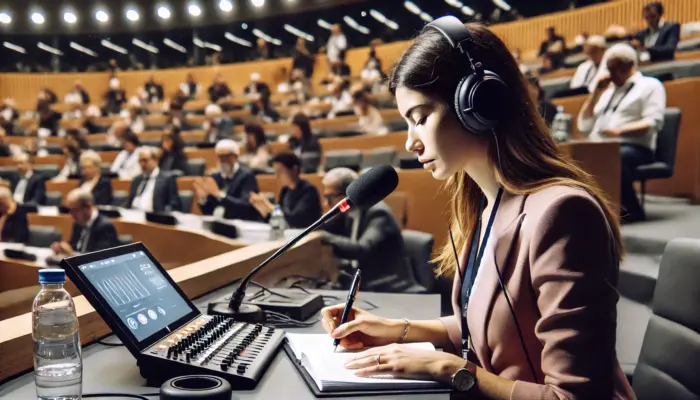In a society as visual as our own, translating multimedia content has become an essential aspect of our lives. Given that it encompasses everything from videos and films to podcasts and interactive games, it entertains, educates and connects us around the globe. Have you ever stopped to think that its international reach depends to a large extent on good translations?
In the last few decades, and driven by technological developments, multimedia content has undergone a truly meteoric evolution. We’ve gone from simply sharing static images and text to making use of a wide range of audiovisual resources which includes videos, animations, interactive infographics, and virtual reality. As a result, communication today is more effective and attractive for users, having become more dynamic and fun.
Logically, and given that companies aspire to reach global audiences and must adapt their message to different cultures and languages, effectively translating these types of content is now an absolute essential.
What do we mean by multimedia content?
This content applies to the synergic combination of various verbal, visual, and audiovisual communication elements and formats to transmit information adapted to different media. This presence of various stimuli offers audiences a richer and more persuasive experience.
Its current popularity stems from its huge capacity to capture viewers’ attention and store information to memory. The sensory, emotional, and persuasive impact of visual and audio resources is significantly more captivating, emotional and effective. As a result, it promotes participation, boosts reach, and ensures more effective and long-lasting engagement. Marketing, remote training and leisure are the main fields in which it is used.
The benefits of audiovisual translation
Multimedia translation adapts audiovisual content to different languages and cultures, expanding its reach and potential audience. Want to discover its main benefits? Take note!
- It boosts the ability to reach a more diverse and multicultural audience. By translating videos, films, adverts, or any other type of visual content, we offer the opportunity to transmit messages and feelings to people speaking completely different languages.
- It facilitates the globalization of brands and products, as it makes it possible to share them on new markets.
- It increases growth and generates new business opportunities, thanks to the advantage noted above.
- It overcomes linguistic barriers, thereby promoting globalization and cultural exchange.
Specialist translations: a plus for global communication
Of course, ensuring that audiovisual content reaches international audiences in optimal conditions requires a paradigm shift in terms of human relationships—both personally and globally.
It’s important to consider that translating multimedia content not only involves transcribing dialogue, but also requires the adaption of visual and audio elements to ensure that the message is correctly transmitted in various cultures. As a result, we must consider the various meanings and local interpretations of factors such as colours, images, and symbols. Adapting them is vital in order to achieve the desired goals.
In short, as well as offering new growth and projection opportunities to companies and institutions, audiovisual translation promotes both cultural preservation and dissemination. If you’re looking for an effective, accessible, and 100% professional solution for these services, speak to us. At blarlo, we offer you a great team of experienced professionals and next-generation technological resources.






